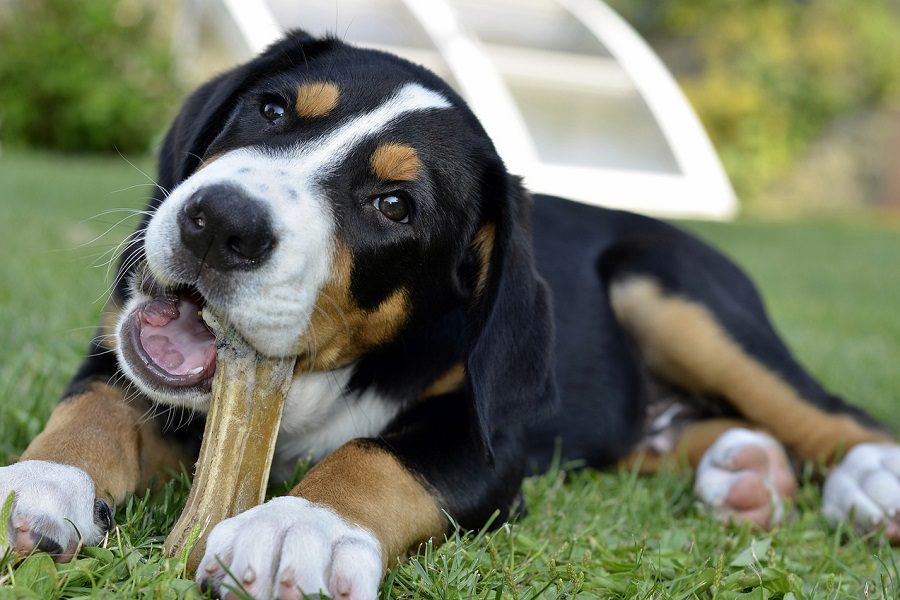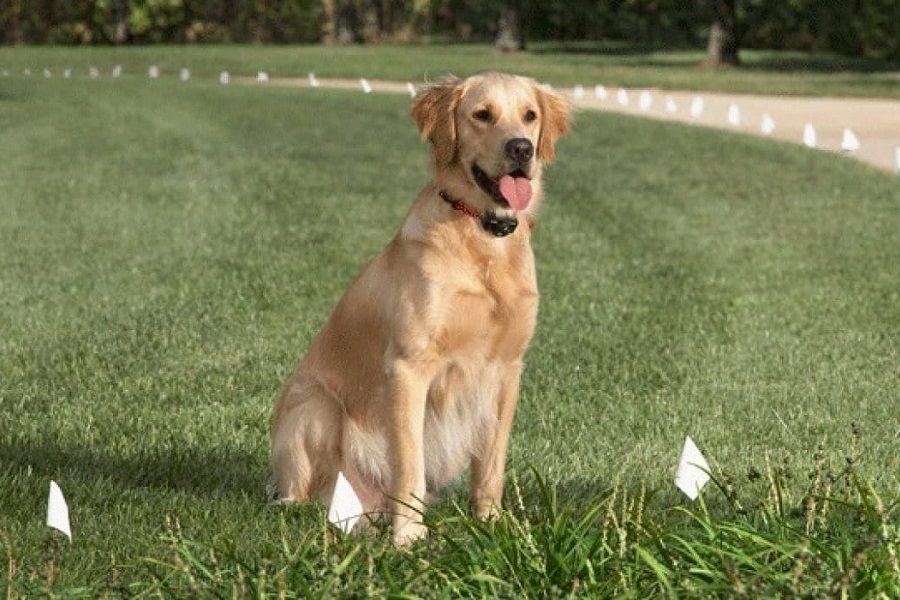Last Updated: 4 months ago
Having a baby has changed your world, but it has changed someone else’s world too. If you own a dog or dogs, then introducing a new lifeform into a settled environment can cause its own problems.
As far as your pet dog is concerned, the pack is settled, the territories are laid out, as are patterns of behaviour and scheduling.
Making a sudden change to them with a crying baby not only disrupts all of that but also takes vital attention away from the dog onto something new.
Dog jealousy is a very real possibility if the introduction is handled badly. However, the good news is that there are many steps you can take for your dog(s) to accept a new member of the pack.
Dogs Can Become Jealous Of Babies
Forget breeds; how a dog reacts to a new baby in the household is down to the particular dog, the household, and how the situation is handled. There are countless examples of canine behaviour changing once a baby has been brought into the home, turning a seemingly normal and well-behaved dog into a jealous one.
They will start to act up to get more attention, may get overexcited, or may be aggressive towards whoever they feel is stealing attention.
Sometimes it is possible to know a dog is a jealous type before you bring a baby home if they challenge people who want to interact with you, such as snuggling on the couch. The same goes for how they might challenge other pets.
They do this because they fear losing your love and attention. This means eliminating any other rival. For most other pets and adults, this can be dealt with, but babies are helpless and unable to deal with the situation.
Getting Your Dog Ready For Your Baby
The best way to stop dog jealousy is to meet the problem before it develops. This means setting boundaries, preparing routines, and giving off the right vibe for the dog(s) to key into.
Here are a few preparations you can make:
- Speak to a Behavioural Specialist: Getting special help in preparing a home for a new baby is vital when it comes to pet dogs. A behavioural specialist knows dogs and how they react, so they can talk you through tips for making the adjustment.
- Establish Limits and Boundaries: This includes no-go zones such as the nursery or other areas where you’d like to have the baby without the dog. First, establish that this is not a zone the dog can enter without permission. You can let them sniff around under supervision, but ensure they leave when asked to and do not enter without your permission.
- Let Them Get to Know the Scent: After the birth, but before the mother and child come home, introduce your dog to the baby’s scent via a burp cloth or another item. Make sure they know it is your item, not theirs, and that they have to come to you to sniff it. Clear rules of ownership are vital at this stage.
- Reinforce Behaviours and Rules: Ensure your dog is behaving well and is in a submissive state. This is a good time to practice, correct small misbehaviours, and re-establish firm leadership. This also means rewarding submissive and calm behaviour as opposed to more hyperactive states.
- Work Out and Set a New Schedule: Having a baby will turn your life upside down, but this can lead to insecurity and jealousy on the part of the dog. Rather than springing the change on them once the baby is home, giving them a target to pin the blame on, work out, and then practice the new schedule before the baby is born and brought into the home,
- Socialise Your Dog with Babies and Kids: If possible, allow your dog to hear the sound of your baby before it comes home. Furthermore, it’s good to expose your dog to new sounds, smells, and energies by allowing them positive interactions with other kids.
The Importance Of Leadership
As you will have noticed above, it is vital to claim ownership and leadership of the situation. No matter the stage of a dog’s development, they need to know that you are the pack leader(s) and not them.
This means they behave better in the house, while on walks, and crucially, in this circumstance, while around the baby.
Controlling The First Introduction
Leadership and control are most needed during the first introduction. This means a well-timed operation to maximise the chances of your dog accepting the new baby as part of the family without feeling jealous. In order to do this, take the following steps:
- Go on a long walk to drain your dog’s energy.
- In the meantime, the rest of the family brings the baby into the household.
- Upon returning, pause for a moment at the doorstep to ensure your dog is calm and submissive.
- Whoever is holding the baby must be in a calm state of mind and relaxed.
- Let the dog sniff at a respectful distance, but not too close at first.
- Slowly let them get closer over time, so they know the baby is another pack leader.
Things To Be Aware Of
Your dog needs attention too. Never forget the dog. This does not mean excessive shows of affection or new toys, but just keeping to the routine. Provide a dog with consistent daily walks, and leadership will keep them happy and secure.
Your Child Will Grow Up Fast: This means they will start to wander, touch, and interact with the world, and this world includes the dog. Supervise all interactions between them and your dog, so both get to know each other and no harm comes to either—we all know babies love to yank tails!
Dogs Pick Up on Your Energy: If you are feeling excited, worried, or nervous about the impending birth or homecoming, your dog will pick up on this and may mirror them.
Your Child’s Safety Always Comes First
First and foremost, the safety of your newborn child, as well as that of other children, is most important of all. If, even after seeking professional advice and dog therapy, you do not trust your dog to be around your baby, seek a new home for them.
This will protect both the well-being and safety of your child and the mental wellbeing of your pet. It sounds like a drastic step to take, but sometimes this is just the way it has to be.



